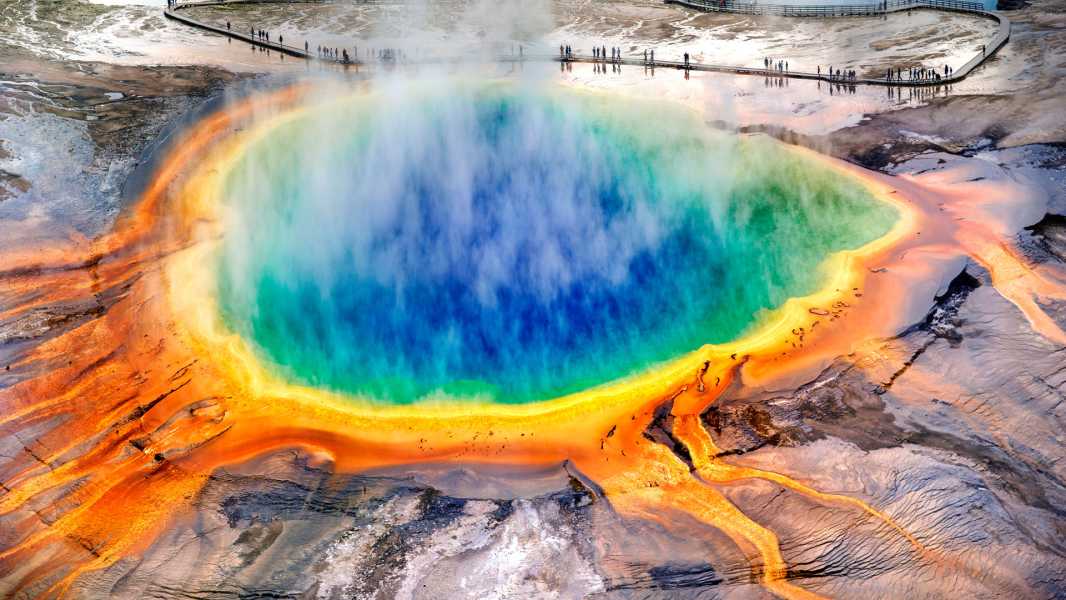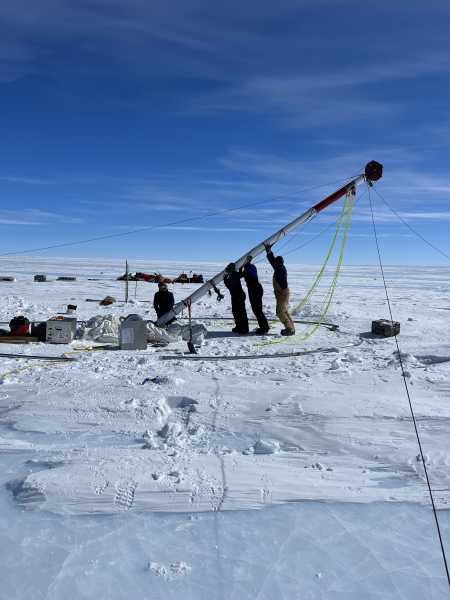
Significant amounts of helium actively circulate beneath Yellowstone and are released into the atmosphere each year. (Image credit: Ignacio Palacios via Getty Images)
More than a decade has passed since scientists discovered that Yellowstone harbors vast reserves of helium, but uncertainties remain about whether it can be extracted to solve the critical shortage. A new study of ancient rocks beneath Yellowstone National Park and two other regions aims to answer that question.
The study, published April 5 in the journal International Geology Review, focused on areas known for their relatively high helium content without the accompanying emissions of methane, a potent greenhouse gas. Helium is produced almost exclusively as a byproduct of natural gas (methane), as natural gas fields trap helium. However, scientists are looking for greener sources to help mitigate global warming.
“We’ve been thinking for a long time about how to find helium that doesn’t rely on fossil fuels,” lead author Ernest Mulaiya, a structural geologist and professor at the University of Dar es Salaam in Tanzania, told Live Science.
A major breakthrough came in 2016, when geologists discovered huge reserves of such helium near Lake Rukwa in Tanzania’s Great Rift Valley. A year later, researchers identified key geological conditions needed for “carbon-free” helium production, Mulaiya said.
The new study looked at three locations — Yellowstone in the US, Bakreswar-Tantloy in eastern India and the Rukwa Rift in southwestern Tanzania — that fit most of these conditions. Notably, these sites are geothermally active, meaning they are in areas where heat from the Earth’s interior rises to the surface, creating features such as geysers and hot springs.
Heat for release
Geothermal heat is essential for producing carbon-free helium because it liberates helium atoms from deep underground rocks. Helium is formed by the decay of uranium and thorium, which takes billions of years, study co-author John Gluyas, a professor of geoenergetics and carbon capture and storage at Durham University in the U.K., told Live Science in an email. The atoms remain trapped inside crystals in rocks unless those crystals are exposed to high temperatures.
“If the temperature exceeds the so-called closure temperature of a particular mineral, helium is released,” Gluyas explained.
The helium then enters liquids — water or brine — that flow in the spaces between rocks, eventually forming a gas that can migrate underground and rise to the surface, he added. In some places — like near Babbitt, Minnesota — the Earth's crust forms a seal that traps the helium in cracks between rocks, creating large pockets of the gas.
The stockpiles are valuable because they could help alleviate a global helium shortage. Helium is a vital component in rocket cooling systems, nuclear reactors, superconductors and medical diagnostic devices, but suppliers may soon struggle to meet growing demand.
Ancient Roots
The discovery of helium in Tanzania has raised hopes that similar geological conditions elsewhere could also contain carbon-free helium reserves, Mulaiya said. In addition to geothermal activity, the Rukwa rift sits on rocks that are billions of years old and rich in uranium and thorium, implying that the helium has had ample time to form.
It turns out that Yellowstone and the Bakreswar-Tantloi province also sit on ancient rocks that are conducive to helium formation. Yellowstone sits on the Wyoming Craton, which contains rocks that are 3.5 billion years old,
Sourse: www.livescience.com





